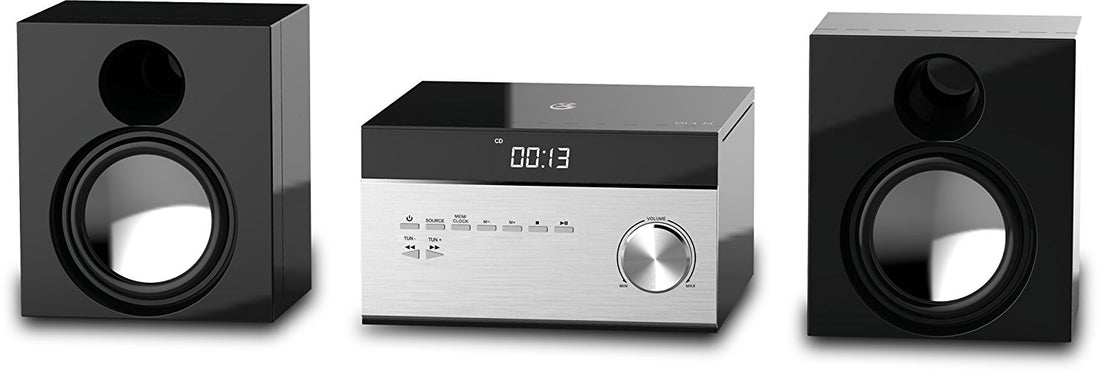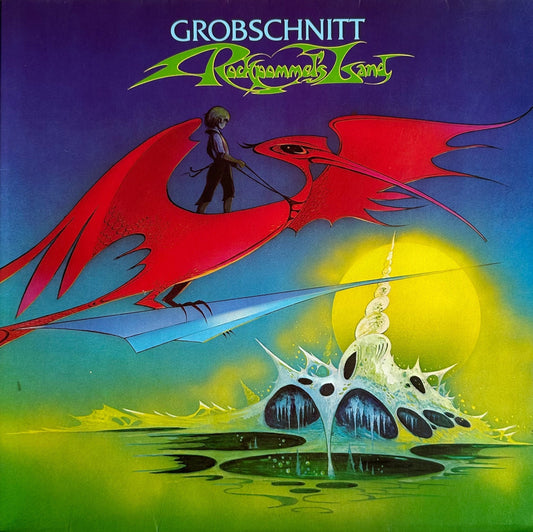As I’ve discussed/ranted many times in this column, to me, “vintage audio” means, oh, 1968 and earlier. One hopes, much earlier. But I’m old.
If you look at any craigslist anywhere, you’ll see ads for “vintage audio” from the 1980s, 1990s, even around 2000. The stuff I see doesn’t say “vintage audio” to me; it says, “cheap plastic crap that I didn’t want then, much less now.”
I doubt if I’ll be poring over craigslist—or whatever replaces it—as a centenarian, but assuming I were still around, and looking at ads for “vintage audio” in 2068…what might I find? Possibly something like the impressive-looking mini-system shown above, currently available on Amazon for $40. Yes, I would classify it as lightweight, throwaway junk—but who knows? It may give its owners some pleasure.
The bigger question is, what kind of vintage audio gear will enthusiasts be looking for in 50 years? Will there be a revival of interest in some category we don’t expect—as there was a surge of interest in turntables and records, when most had dismissed them?
How about tuners? In 50 years I expect terrestrial radio to have pretty much vanished, so those complex, precisely-made devices will be little more than novelties, Ooh—feel the way that flywheel spins! That may be the great benchmark of what determines desirability, along with the colors of dial lights, indicators, and meters. Undoubtedly, there will still be some who obsess over the blue lights of McIntosh gear; I hate to think of an MR78 reduced to being nothing more than a massive nightlight—but it could happen.
As growing populations and power-grid overloads demand greater electrical efficiency, we’re likely going to see restrictions on what kind of devices can be sold, and used. Class-D is likely just the beginning as efficiency moves from being “a good thing,” to a legal requirement. Those giant Class-A amps? Vacuum tubes? Likely relegated to shelf space, gathering dust, unless one goes off-grid and generates their own power. Along those lines, as photovoltaic cells become more and more efficient—and yes, I assume we’ll get past the present attempts to go back to fossil fuels—who knows what we’ll see? Heck, solar-powered Class-A amps could heat homes, also!
I think it’s reasonable to assume that in 2068, wireless connectivity will be the norm, and powered speakers incorporating amps, DACs, who knows what all, will dominate. The result might be nostalgia for separate components, and even wire. We may see collector-hoarders who accumulate speaker cables and power cords based upon their thickness, the snakiness of their covering, how brightly the connectors shine…. My cynical side says, “so—not much different from the present day,” but that’s a little harsh.
Continuing with speakers: the conversion-efficiency of moving coil loudspeakers could well be improved. By 2068, such things may be viewed as obsolete, and devoutly desired by collectors. Piezoelectric films or nanowhatever may make up the speakers of the future. And what about giant, multi-way horn systems that occupy whole floors of houses? As population density increases, houses will be rarer and more of a luxury, and the percentage of home-owners devoting the space they have to huge sound systems will diminish.
It’s entirely possible that audio in 2068 will look completely different from today’s gear, and may largely be invisible—I would expect systems integrated into the home to have taken several steps forward by then. Voice control and gestural control may be passe’ at that point…what’s next? Thought control? I would also bet that there will be several new storage formats by then; I would expect even CDs to be viewed with the sense of novelty and nostalgia with which vinyl newbies approach LPs.
During the 50 years I’ve been around audio, there have periodically been cries that everything was going away,that audio enthusiasts are all dying off. Somehow, the field persists; technology has changed in ways that couldn’t have been foreseen in 1968, and so has society. There may be fewer old-school audiophiles around today, compared to decades ago—but the problem is that we are reluctant to recognize new and different ways of enjoying music. While complaining that audio show attendees are all fat old men, we refuse to see all the younger folk in the headphone pavilions and those exploring turntables for the first time.
Just as when, in high school, I approached my ’36 Philco console radio (purchased for $12, and by God, I wish I still had it) with a mixture of wonder and bemusement, I expect that there will always be audio archaeologists who admire the technology of earlier eras.
At least, I certainly hope so.
And now—a contest!
What current products do you think will be sought-after in 50 years? What changes do you think will occur to audio gear between now and then?
Let’s hear your thoughts! The best answers will receive a copy of the beautifully-produced 450-page German book, Who Is Who in High Fidelity. We only have a few copies—likely the only copies in the US. As a bonus, Paul McGowan will autograph the chapter on PS Audio. Don’t worry: text is in both German and English.
This book is really heavy, so unfortunately we must limit the prizes to US residents. Give it your best shot—and leave your ideas below, as comments!




